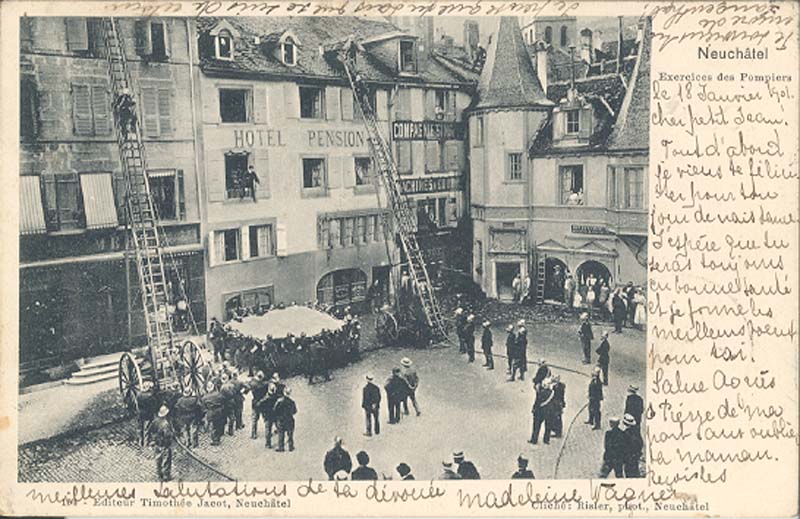Image: Postcard sent by Madeline Hanni-Lozeron to her brother Pierre in Canada, 1902 (SPRA 006.04.01.01)
The history of postcards dates back one hundred and fifty years. Immensely popular, these affordable, attractive, and sometimes kitschy items likely owe their existence to stamps.
Before the 1840’s, mail rates varied depending on the number of sheets in a letter and on the distance the letter travelled. Postage was payable upon receipt of the letter. If the addressee refused the letter, the post office was out of luck. The Postmaster General of England, Sir Rowland Hill, proposed two of the changes we take for granted today: postage should be at a set rate to anywhere in England, and the sender should pay it. Proof of prepayment would be required. That proof of course, was the stamp, and in 1839, Sir Hill’s proposals were passed in the Penny Postage Act. The first penny postage (called the Penny Black because of its black background) first sold on 1 May 1840 and the first Canadian stamp (the Three Penny Beaver) was issued 23 April 1851.
The penny postage made mail affordable and more reliable. Paper cost was still an issue. Luckily, postal cards soon followed the new postage system. Like many popular, mass produced items, there is some question as to where and who developed the first private postcard. We can only be certain that, by the 1870s, governments began to issue “postals” – plain cards with a stamp image on the back.
Now people had their stationary and postage all together for one affordable price. But plain cards were not enough. Printed envelopes had become quite popular in the 1850s; the same was soon true for postal cards. This likely contributed to one of the major lasting changes in the production of postcards – the divided back.
Because original postcards were plain, the recto (front) side was used for message writing while the verso (back) side was strictly for providing a delivery address. England was the first country to approve the divided back on postcards in 1902. This provided space for writing and an address on the back of the card, leaving the front unblemished.
Postcards form a small but important part of our holdings and they convey valuable evidence about people and the places they lived and visited. Most of the postcards spread throughout our holdings are view cards (images of cities or places), greeting cards, and photographic cards (people). We are also lucky to have several “silks” (embroidered cards which were immensely popular as gifts during the Great War) and a number of humorous “topicals” from each of the wars. A timely gift to friends and family in the past, postcards can provide a wealth of information about social past-times, personal relationships, and changes in the urban and natural landscape.
You can create your own history. Next time you take a trip, send yourself postcards featuring sites of interest. Jot down a quick reminder of your special moments and when you arrive home, you will have a pictorial and a textual reminder of your holiday. You could even do this for staycations. Slip them into sleeves or a travel box and you have an instant travel archives to share with family now and in the future.
This article was originally featured in the December 2018 issue of Telling Our Stories.
